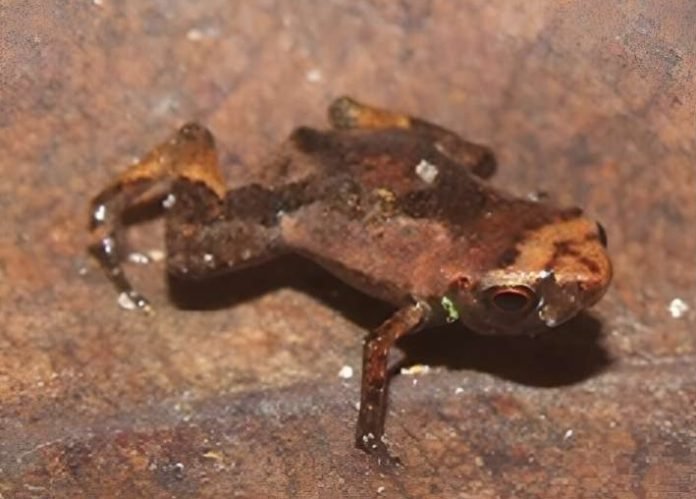
In the verdant landscapes of southern Brazil, a remarkable discovery has been made by a team of biologists from Universidade Estadual de Santa Cruz, Brazil, who have identified what is now considered the world’s smallest amphibian and vertebrate:
the Brachycephalus pulex, commonly referred to as the Brazilian flea toad. Detailed in their study published in Zoologica Scripta, this tiny frog has set a new record in the animal kingdom for its minuscule size.
The initial discovery of this diminutive frog dates back to 2011, when researchers stumbled upon it residing exclusively on a few select hills in the southern region of Bahia, Brazil.
Initially believed to be a toad, hence its nomenclature, the Brazilian flea toad has since captivated the scientific community and enthusiasts alike with its unique characteristics.
In a bid to accurately document the size of these frogs and ensure the measurements were of mature individuals, the researchers embarked on a meticulous examination process.
This involved capturing and releasing several specimens, checking for signs of maturity such as gonads and vocal slits, to confirm adulthood before measuring their body length.
The outcome of this careful study was astonishing. Measurements taken from 46 specimens revealed that the average male body length barely exceeds 7 millimeters, making them smaller than a pea.
To put it into perspective, two of these frogs could comfortably fit on a pinky fingernail. Females were found to be slightly larger, averaging 1 millimeter longer than their male counterparts.
The smallest specimen recorded measured a mere 6.45 millimeters in length, about 30% smaller than any previously recorded frog species.
This groundbreaking discovery not only highlights the Brazilian flea toad as the smallest observed vertebrate but also opens up discussions on the existence of potentially even smaller vertebrates yet to be discovered.
The study also sheds light on the evolutionary adaptations and constraints of such small-sized vertebrates.
Many of the tiny frogs, including Brachycephalus pulex, exhibit unique physiological traits, such as a reduced number of toes or underdeveloped ears, which suggest a limit to how small vertebrates can evolve without compromising their survivability.
This tiny amphibian’s discovery underscores the vast unknowns that still exist within our natural world and the importance of continued exploration and conservation efforts, especially in biodiverse regions like Brazil’s forests.
The existence of the Brazilian flea toad not only challenges our understanding of vertebrate size limits but also serves as a reminder of the delicate balance of ecosystems and the need to protect them.
The research findings can be found in Zoologica Scripta.
Copyright © 2024 Knowridge Science Report. All rights reserved.



